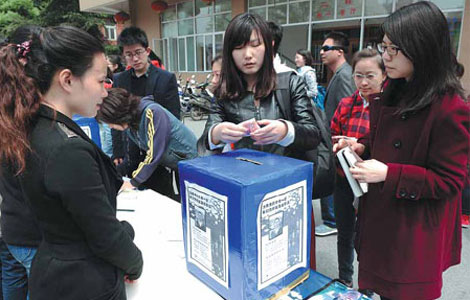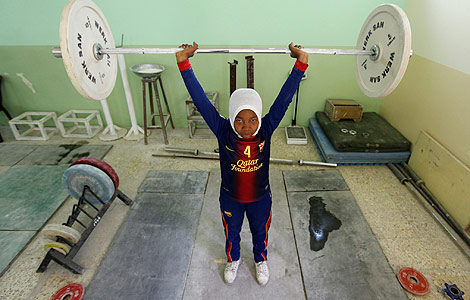Consolidation: The name of the game in 'hot' device sector
Updated: 2013-05-09 06:02
By Liu Jie (China Daily)
|
|||||||||||
China's medical device market has become a hot sector for mergers and acquisitions, as foreign and domestic players eye each other's markets, said a report conducted by global professional services firm KPMG.
During 2011 and 2012, at least 36 deals were closed in medical devices in China, with a total disclosed transaction size of $1.6 billion for 22 of them. Neither the deal numbers nor the size are large compared with many developed markets, but two of them - in 2012 and 2013 - stand out as a benchmark, indicating that medical devices are big business, according to Norbert Meyring, head of KPMG Life Science in China and Asia-Pacific.
Foreign manufacturers are building a bigger and more direct local presence by acquiring and merging, rather than setting up joint ventures, with Chinese counterparts. Chinese companies are seeking to upgrade and offer better quality products in and beyond their current portfolios and markets, he said.
There were two big deals in the industry recently. One was Medtronic Inc's acquisition of China Kanghui Holdings for $816 million last September. The second involved US medical device giant Stryker Corp's offer to buy Chinese orthopedic maker Trauson Holdings for $764 million in cash earlier this year. Trauson started its business in orthopedic products for trauma and spine applications in China in 1986. Its sales were approximately 62 million yuan in 2011.
Medtronic and Stryker's acquisition rationale is similar - marketing and distribution platforms remain the first priority for foreign companies, said Meyring.
Even multinational companies accustomed to the "do-it-yourself" philosophy of organic growth seem to be lured by the massive market and the rationale for inorganic growth through M&As in China. Johnson & Johnson, a multinational company that has been in the market for decades, had never acquired a Chinese medical device company during its previous operations in the country. In May 2012, however, it made its first acquisition of a local company - Guangzhou Bioseal Biotechnology Co - which manufactures porcine-plasma-derived products for controlling bleeding during surgery.
After the integration, Bioseal started to serve as Johnson & Johnson's main R&D and production platform for China and other Asia-Pacific regions, at a lower cost than other centers. Also, the acquisition offered it a direct connection to the distribution channels owned by Bioseal in Guangzhou and other South China regions.
The acquisition of the top two Chinese orthopedic manufacturers by foreign companies will further stimulate consolidation in the market. Foreign high-end market leaders have made it clear they are looking at lower-end expansion at the same time as Chinese companies want to break new ground with overseas businesses.
"Fierce competition for good, but hard-to-find, target companies that possess widespread marketing and distribution networks is expected to propel future transaction sizes to record highs," said the report.
Related Stories
Asia regulatory reform may have negative effects: KPMG 2013-02-20 16:59
KPMG sets up tax advisory firm in Shanghai 2012-12-21 16:26
No hard landing for economy: KPMG report 2012-08-16 03:39
KPMG to help local companies expand overseas 2012-08-01 14:03
KPMG's localization program approved 2012-07-16 15:53
Today's Top News
Washington reaffirms defense of ROK
Indian FM kicks off 2-day China visit
China, Israel boost social, economic cooperation
Li calls for sound agriculture
China's CPI grew 2.4% in April
Govt environmental transparency in doubt
Monorail to ease Shanghai's congestion
Bone marrow program to 'spread gifts of life'
Hot Topics
Lunar probe , China growth forecasts, Emission rules get tougher, China seen through 'colored lens', International board,
Editor's Picks

|

|

|

|

|

|





